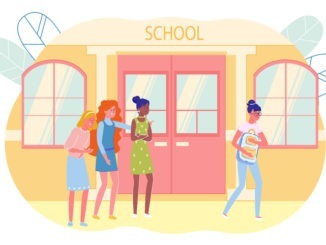
Parents and teachers call for action as figures show more young children in England being permanently excluded
This is an edited version of an article that originally appeared on The Guardian
Sam Bates* was excluded from school for the first time when he was five years old. After moving into Year 1 he struggled to sit still, became frustrated with staff and pushed chairs over. He was sent home for one day and was then allowed back for only two hours a day, separated from his classmates, with a teaching assistant. From there, things unravelled.
“That went on for seven months – the two hours a day,” says Amanda Bates*, his mother, based in the east of England. “It really didn’t work.” She asked if Sam could go back but repeat a year, as he was young for his year group, but this was refused. Instead the school applied for the local authority’s ‘specialist resource space’, an alternative to mainstream school. “But there was a huge waiting list and they wouldn’t take him,” says Amanda.
In desperation, Amanda moved Sam to a new school, but he was anxious about leaving the house. “I was being told by everyone, ‘You must get him into school’,” she says. To this end, she rang social services and a social worker came to help. “She picked him up by his arms to get him into the car. I said, ‘Please, stop – he’s too distressed’.” Eventually, says Amanda, the new headteacher said, “The only way I can help this boy is if I permanently exclude him.”
The headteacher was trying to help, Amanda recognises, because an exclusion would trigger more support, but it was devastating. “I think it’s shameful that it takes a permanent exclusion for children to be supported,” she says.
The number of permanent exclusions from primary schools in England has been rising steadily, from 610 a year in 2010 to 1,067 by 2018-19 (the last year of reliable figures).
In the autumn term of 2019, just before the COVID crisis, data recently published shows that permanent exclusions from primary schools rose by 20% to 455 compared with the same term the previous year. The rise in secondary schools in the same period was three per cent. The most common reason given by primary schools for excluding a pupil was ‘physical assault against an adult’, accounting for 41% of cases, followed by ‘persistent disruptive behaviour’ (30%) and ‘assaulting another pupil’ (10%).
Sam has now started the new school year at a special educational needs school, which his mother believes is right for him. “A lot of mainstream schools really don’t know how to support these children, and don’t have the funding,” she says. “While you’re waiting months to see an education psychologist, you have no support,” she says. “It made me feel really dreadful. I cried myself to sleep at night.”
Shortages contributing
A shortage of educational psychologists and a lack of school funds to buy in their services could be contributing to the problem. Research commissioned by the Department for Education in 2019 revealed that more than two-thirds of councils could not fill educational psychologist (EP) vacancies. Two years on, many problems remain. “There’s been a big increase in parents trying to access education health and care plans,” says David Collingwood, the president of the Association of Educational Psychologists. “The more time we spend assessing for those, the less time we have for early intervention.” And not all schools can afford educational psychologists. “Pre-austerity, every local authority would have had an educational psychologist as a free service to all schools, but then different funding models came in, and most schools now buy-in their time – so some schools have less time with a psychologist, or no time at all.”
The increasing numbers of primary exclusions have prompted several providers to plan expansions to offer new alternative schools for younger children. Caron Johnson, executive headteacher at The Rowans AP Academy, a secondary school in Medway, Kent, has got the go-ahead from government to open a primary centre in 2023 to meet rising demand. Since March, she says there’s been “a massive rise in cases from primary” at her local schools’support group, a panel of experts that helps schools and aims to avoid exclusions. “Traditionally, about a third of them would be primary pupils, and two-thirds secondary. That’s flipped around – now, it’s two-thirds primary.” The answer is not to blame primary schools, she says. “What the government needs to do is get real experts into schools offering support.”
Why are they here?
Astrid Schon, headteacher at London East Alternative Provision, says primary teachers need more help to spot children with additional needs early on. Schon is a partner headteacher with The Difference, a social enterprise that trains teachers to specialise in helping vulnerable children. There has also been a shift in recent years to stricter behaviour policies in schools, she says. “Small infringements which, 10 years ago, were not a big deal, are now a big deal. We are seeing children where we ask, ‘Why are they here?’”
One solution could be a local independent panel to oversee exclusions, says Emma Balchin, a director at the National Governance Association (NGA). The NGA warned in 2018 that governors can feel pressured to endorse the head’s decision to exclude a child. “The problem with primary exclusions is that, as a governor, you probably only ever deal with one or two cases, so there’s no chance of being an expert,” she says. “An independent panel could provide that expertise and challenge.”
Within the government, meanwhile, ministers continue to delay publication of a long-awaited special educational needs review, with three of its own deadlines already missed. A ‘behaviour hubs’ programme is being rolled out, led by ministers’ behaviour adviser, Tom Bennett.
* Parents’ and children’s names have been changed to avoid identification.



Be the first to comment